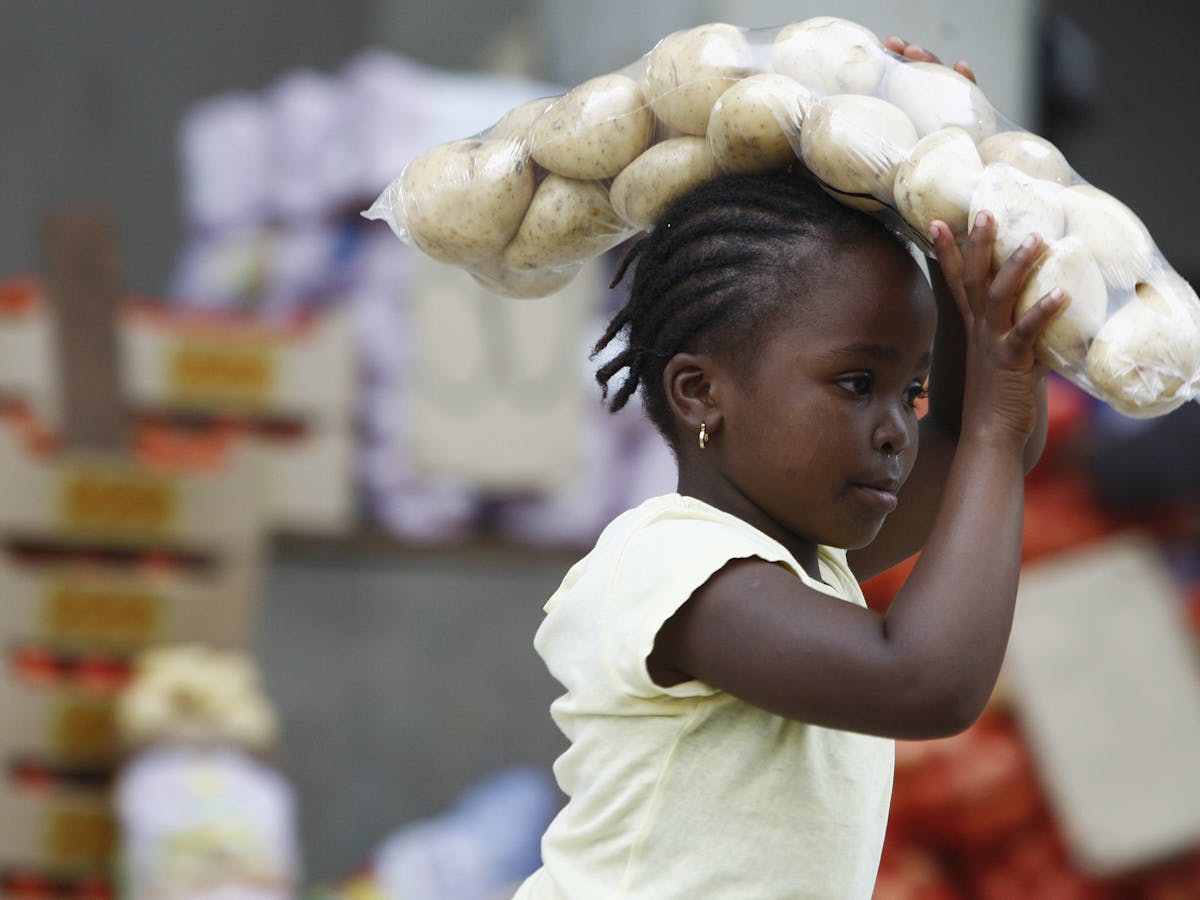Some sections of a society that are the poorest are also the most vulnerable to food insecurity. Let us look at the relationship between poverty and food insecurity and how eradication of poverty is the key to attaining sustainable food security.
Definition of Poverty
Poverty is a condition that exists when an individual lives below the poverty datum line which varies from one country to another. The poverty datum line is close to the general definition of 1$ per day. In that case, the datum line is the income equivalent of what an individual or household of six members require to meet basic human material needs such as access to food, shelter, clothing, clean water, health and sanitation.
The poverty datum line is a compound index made up of individual basic human requirement indices. People falling below this compounded index which is measured in income terms are classified as poor. It is on this basis that percentages of poverty levels are generated. Note that, poverty datum lines are compiled by the Central Statistical Office based on surveys such as the Living Conditions Monitoring Survey (LCMS) and Household Budget Surveys (HBS).
According to the Living Conditions Monitoring Surveys, the national poverty level was estimated to be 68 percent of the total population in 2004 and dropped slightly to 64 percent in 2006. Consequently, in the event of a national disaster that impacts negatively on food production and supply, about 64 percent of the population is potentially vulnerable to food insecurity.
Impact of Poverty on Food Security
Households that are in the poverty category are more vulnerable to shocks and food insecurity in comparison to households that are not poor. The food insecurity situation in Zambia follows the trends of poverty. Food insecurity is higher in rural areas where poverty levels are higher in comparison to the urban areas.
Food insecurity in Zambia is worse among the rural small-scale agricultural households who depend on their own production for food supplies. Across the population stratum the other most vulnerable groups to food insecurity are the aged. poor female-headed households, orphans and generally the unemployed youths.

Poverty erodes the capacity and resource base for individuals to have alternative coping mechanisms that can enable them to be resilient to hazards or natural and human induced factors that cause food insecurity. Resource rich households are able to convert some of their assets such as domestic property or livestock into food supplies. Poor households on the other hand cope with shock induced food insecurity by:
- reducing food quantities consumed
- reducing frequency of meals
- resorting to less preferred food commodities
- resorting to low value and poor quality food commodities
Although poverty has declined in the last five years, from about 73% in 1998 to 68% in 2004 and then to 64% in 2006, the levels are still high. Poverty has been higher among the small-scale farming community as compared to the non-farming community. Table 1 and Figure 2a and 2b show 84% as compared to 79% incidence of poverty in 1998 and 79% as compared with 69% incidence of poverty in 2004, among the small-scale farming community and non-farming community, respectively. In 2006 it was 80% in rural areas as compared to 34% in urban areas.
Table 1: Poverty Changes 1998 to 2004
|
Residence
|
Population
('000) |
Incidence
of Poverty (%) |
Depth
of |
Severity
of Poverty
% |
||||
|
|
1998
|
2004
|
1998
|
2004
|
1998
|
2004
|
1998
|
2004
|
|
Rural
|
6,359
|
6,662
|
83
|
78
|
49
|
44
|
34
|
30
|
|
Urban
|
3,824
|
4,292
|
56
|
53
|
23
|
22
|
13
|
12
|
|
National
|
10,183
|
10,954
|
73
|
68
|
40
|
36
|
26
|
23
|
|
Central |
1,019
|
1,136
|
77
|
76
|
44
|
43
|
31
|
28
|
|
Copperbelt
|
1,823
|
1,661
|
65
|
56
|
31
|
24
|
19
|
13
|
|
Eastern
|
1,304
|
1,514
|
81
|
70
|
46
|
40
|
31
|
27
|
|
Luapula
|
701
|
863
|
82
|
79
|
47
|
42
|
32
|
26
|
|
Lusaka
|
1,526
|
1,534
|
52
|
48
|
22
|
19
|
13
|
10
|
|
Northern
|
1,237
|
1,407
|
82
|
74
|
45
|
41
|
31
|
27
|
|
North-
|
549
|
654
|
76
|
76
|
41
|
40
|
27
|
26
|
|
Western
|
756
|
826
|
89
|
83
|
57
|
53
|
42
|
38
|
|
Southern
|
1,268
|
1,360
|
76
|
69
|
42
|
35
|
28
|
22
|
Since food insecurity is closely associated with extreme poverty, the poverty data presented above also give a good proxy indicator of the extent and geographical distribution of the food insecurity problem in Zambia. The `extreme' poverty line is closely linked to food needs.

The challenge is to have an inner depth understanding of the pervasive effects of poverty on food security. This will enable the design and adoption of long term interventions that will address food insecurity using comprehensive approaches that aim at eradicating poverty as a prerequisite to achieving sustainable or long lasting food security.
Comments
Post a Comment